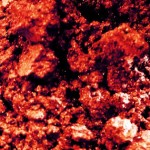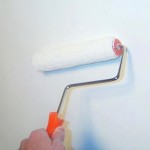Acrylic sheet has been on the market for more than 75 years, ever since Rohm & Haas introduced it as Plexiglas® in 1936. Yet, as commonplace as acrylic is, its chemistry has evolved. Sheet manufacturers typically modify the Poly Methyl Methacrylate (PMMA) with additives to change the performance properties of the plastic. Today, a wide […] Read more »
Outgassing and Health Concerns

I have received several letters from those who have read my story about outgassing. I certainly did not intend to cause alarm. Plastics outgas (also referred to as off gassing or degassing). The rate at which this outgassing occurs depends on the resin type, time, temperature and atmospherics. The good news is that outgassing of a […] Read more »
Accentuating Contrast in Your Chip Carving
Woodcarvers use several different techniques in staining their chip carving. Many will take a small brush, such as a #8 quill, to stain the entire panel with a very light colored stain, wiping the excess stain from the wood with paper toweling. After the lighter stain dries, the next step is to apply a darker stain. […] Read more »
Safely Working with Pigment Powders

Making your own paint is a relatively easy process. All you need is powdered pigment and a binder. Depending on the type of paint you are making, you have a variety of choices for a binder, including linseed oil, acrylic emulsion, egg yolk and animal hide glue. The one ingredient that is common in all […] Read more »
Choosing a Floor Graphics Overlaminate
Which Film is the Best? Today you have many more overlaminate options for floor graphics than were available ten years ago. Polycarbonate and vinyl films — most of which are pressure-sensitive — are often used to protect floor graphics. Read more »
Safety and Latex Paints

In my articles on wall graphics I make a few recommendations on painting with latex paint. What I did not do was make any recommendations regarding safety. Who would think that there are any health concerns when painting walls with latex paint? I never did. After all, latex paint is water-based and that’s safe, isn’t […] Read more »
Dimples in Paper Application Tape
Dimples on a person’s face are usually regarded as being attractive and desirable. But dimples on the surface of paper application tape…not so much! In fact, dimples in the application tape are aesthetically unappealing. In most cases, however, a little dimpling does not mean the roll is bad and can’t be used. Generally, sign makers can […] Read more »
Application of Vinyl Graphics to Acrylic Signs
When decorating acrylic sheet, selecting the right vinyl film for the job depends on a variety of factors: Read more »
Gold Leaf: To Clear or Not To Clear
Most gilders agree that for most sign applications, you should not clear coat 23-karat gold leaf. What differentiates gold from other metals is its brilliance. Clear coating diminishes its shiny surface. But as with all rules, there are exceptions. If it is likely that the general public will put their grubby mitts on the gilded surface, […] Read more »
Time Management Tips
Getting Control of Your Day Time can easily slip away. When this happens, promises to customers are broken, return phone calls aren’t made, appointments and deadlines are missed and new sales opportunities are lost. Read more »


